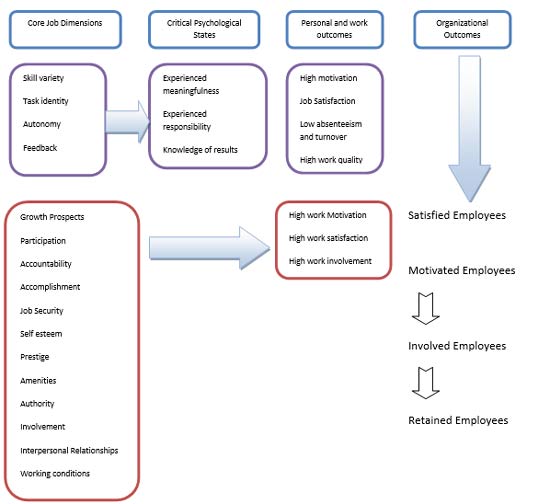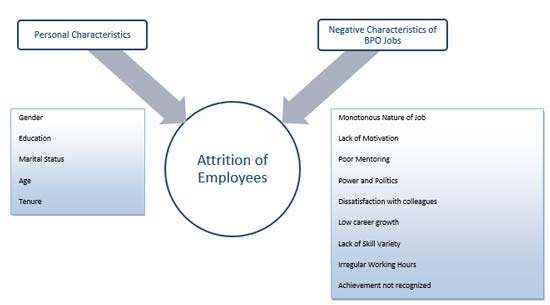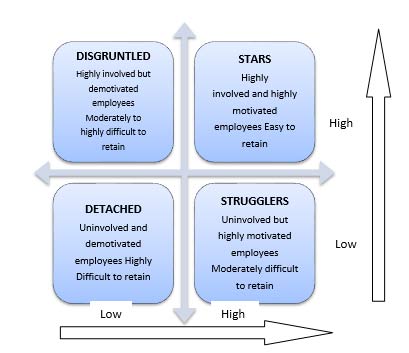- Articles ›
- Human Resources ›
- Employee Retention in The BPO Sector Articles
Employee Retention in The BPO Sector
BPO’s are the highest job provider in the IT sector employing a total of more than 8 lakh professionals. Notwithstanding the initial glamour of this sector as a harbinger of opportunities and an attractive career option, today with the vast number of players in the arena and easy availability of lucrative software jobs, the sector is smitten with the problem of attrition. Even big firms like Infosys and Wipro have an attrition rate of close to 20% in their BOP arms which is very high.As a quality workforce is crucial for business success, employers have started taking this very seriously and a lot of initiatives are being taken to curb attrition. As Kamal Karanth of Kelly Services India puts it, “The workforce is the backbone of the BPO industry and the attrition rates have becoming alarmingly high for the industry. Most of the companies are promoting within to ensure that talent remains.”

image:freedigitalphotos.net
A lot of research and study has been done towards identifying the major reasons why employees are leaving BPOs in hordes. As Fidelity National Financial India Country Head Sameer Dhanarajani says IT companies and BPOs are witnessing a major talent crunch."The macro effect is balanced by one company losing its critical staff to another and a company getting critical resources in return. But aligning them to the organization still remains a challenge," he said, adding there are hiring, training and maintenance costs associated with a new inductee, irrespective of the place in the hierarchy that the person assumes.
Attrition has terrible effects on the company. The high attrition costs considerably increases the costs to the organization. They have to deal with the amount of disruption due to unplanned exits. The more people leave an organization, the more it is a drain on company’s resources like recruitment expenses, training and orientation resources and time. The high attrition rate also affects productivity. Hence, it is extremely critical to curb attrition not only for an individual company but also for the industry as a whole. Various studies have been carried out to study this phenomenon and a number of factors have been identified:
- Low perceived value and monotonous work
- High salary expectation and unusual working hours.
- Disillusioned employees
- Stress and burnout, pressure to perform on metrics, and lack of motivation.
- Lack of security and social interaction.

Fig1: Modified version of Job Characteristics Model
We can use the Job Characteristics Model as a framework to understand how typical job characteristics impact job outcomes, also job satisfaction. The model describes five core job characteristics (skill variety, task identity, task significance, autonomy, and feedback) and their impact on three crucial psychological states (experienced meaningfulness, experienced responsibility for outcomes, and knowledge of the actual results). The basic tenets which determine the life cycle of employee like motivation, satisfaction, involvement, life interest and work compatibility can be understood with this model after making a few modifications. It is proposed that the Job Characteristics model can be customized by redefining job dimensions as growth prospects, accountability, sense of accomplishment, self-esteem, job security, interpersonal relationships, working conditions, by extending organizational outcomes as satisfied, motivated, involved and retained employees. The new model is also designed to be of use as a management tool and must therefore be simple and flexible enough to be of use to the management of an organization. Typical management scenarios that involve the likely motivational impact of job redesign, such as increasing employees’ level of control and responsibility over their work behavior or introducing a scheme whereby employees participate in certain management decisions can be better understood using this approach. The model enables managers to control a host of job characteristics and investigate the likely effects upon the motivation, performance and sustenance of the workforce. This study aimed at exploring the dimensions of attrition and retention. It has also been found that the factors that influence attrition are quite different to those that affect retention.
Using the modified model a more comprehensive framework can be devised which illustrate these aspects as given in Figure 2 and 3.Figure 2 clearly illustrates the basic constructs of the attrition model: personal characteristics, negative job characteristics (job dimensions), and the final resultant as attrition. Figure 3 illustrates constructs of retention model i.e. personal characteristics, intrinsic job dimensions and the resulting level of satisfaction, motivation and involvement (work outcomes) and the final result i.e. retained employees organizational outcomes).

Figure2: Basic Model for Attrition

Figure3: Basic Model for Retention
Also it has been found that there are two key dimensions that influence the sustenance of an individual in the organization; they are individual motivation and work involvement. Based on these two dimensions the employees can be divided into four categories:
- Detached: There are people who are woefully inadequate in both dimensions i.e. neither are they involved in the work, nor are they motivated to perform. They are very difficult to retain as they leave the organization for no apparent reason
- Disgruntled: These people are the ones who are involved in their work but lack the motivation to carry the work through
- Strugglers: These people develop on the higher level of motivation spectrum, but lack involvement. They can be retained by increasing the involvement component by increasing their work responsibility and giving more decision making authority
- Stars: These people are the ones who are the easiest to retained as they rate high both on job involvement and intrinsic motivation

Figure 4: Job Involvement vis-a-vis Intrinsic Motivation
Disgruntled and Strugglers are the two categories that the company needs to retain by pulling away all the non-retentive forces and kicking in all the retentive forces into high gear. This result is analogous with all the established theories of motivation viz. Herzberg’s theory, Maslow’s theory, Alderfer’s Theory, McClelland’s Theory. According to all these theories, the higher order needs revolve around self esteem, or self actualization in one way or the other.
Organizations have to be a proactive retention strategy in order to reduce employee turnover. The strategies adopted have to be different for different categories of employees as their needs; aspirations and motivational levels vary with every level in the organization. Also one has to account for various demographic variables, age, gender, marital status, education and geographical factors. Ideally a retention strategy adopted by a company should incorporate the following aspects:
- Reciprocity: Employees invest a lot of time and resources in the company and expect a return on investment. Companies need to understand this and reward them with proper recognition, empowerment and authority
- Organization culture: Successful organizations have retention woven into organizational values and culture and this is one of the main reasons which makes them different from the rest
- Loyalty: Loyalty is never a given so it is essential to develop a sense of loyalty among the employees
- Recognition: It is not sufficient to acknowledge only the top10% of star performers, in fact anyone who sticks with the company through thick and thin and adds value should be appreciated
- Generation centric approach: For the first time in organizations varied generations are working alongside each other. It is important to realize that every generation has a different reason for staying with the organization and it is imperative for organizations to realize this while developing the retention strategies
- Development culture: Career development is perhaps the most critical component of any retention plan. Today moving up the ladder is a crucial aspect for almost all employees and organizations should be able to provide this if they wish to retain the right talent.
Article has been authored by Arindam Bhattacharjee & Bishal Hetampuris, XIMB
REFERENCES
- Vohra, Kushal, Systems Approach to Retention of Critical Employees. Available at SSRN:http://ssrn.com/abstract=662442
- Tapper, David. “Worldwide and U.S. IT Outsourcing Services 2004–2008Forecast: A Potential Perfect Storm.”Market Analysis (April 2004): IDC,Document 31089 www.idc.com
- Ravichandaran, Ram. “BPO, ITES Sectors to Hot Up in 2005, Says NASSCOM Report.” Financial Express (March 9, 2005): 2
- http://articles.economictimes.indiatimes.com/2011-01-31/news/28428356_1_outsourcing-destinations-bpo-companies-organisations
Views expressed in the article are personal. The articles are for educational & academic purpose only, and have been uploaded by the MBA Skool Team.
If you are interested in writing articles for us, Submit Here
Share this Page on:
What is MBA Skool?About Us
MBA Skool is a Knowledge Resource for Management Students, Aspirants & Professionals.
Business Courses
Quizzes & Skills
Quizzes test your expertise in business and Skill tests evaluate your management traits
All Business Sections
Write for Us